Antonio Shepherd made two notable adult films in 1978: 7 Into Snowy and Chorus Call.
They featured many of the biggest stars of the era, such as Abigail Clayton, Kay Parker, Darby Lloyd Rains, and Paul Thomas.
And then Antonio Shepherd promptly disappeared from the adult film scene as soon as the movies were released.
So who was he, where did he come from, and where did he go?
In the first part of this story, we learned about the son of an immigrant jazz musician who’d been a promising actor starring in a high-grossing Academy Award-nominated film. He went on to have a varied music career in the 1960s,= before becoming a corporate Madison Avenue ad man and a jingles writer – all before his surprising career twist that resulted in him directing two adult films.
In this second episode, The Rialto Report tells the story of Antonio Shepherd’s two adult films based on newly-found documents from the era. Then we move into the golden age of children’s TV cartoon shows where Antonio becomes one of the great voice directors in animated films, as well as Stan Lee’s right hand man in the creation of the Marvel universe.
The story of Antonio Shepherd can finally be told.
You can read the first part of the story here.
With thanks to the family, friends, and colleagues of those mentioned in this story who were generous in sharing their memories.
———————————————————————————————————————————————————
17.
April – May 1977 Antonio Shepherd, Björn Björnson, and Bonnie Swift (or Tony Pastor Jr., Lany Gustavson, and Kathleen Kaufman)
In the days after Tony Pastor Jr. became film director Antonio Shepherd, he saw a lot more of David Friedman and William Allen Castleman (who would become the films’ Assistant Director).
Friedman was keen on securing Tony’s directorial know-how for at least four films, and his preference was for all of them to be made on the west coast where Friedman had cultivated most of his own industry network. Further, he expressed a preference for all the films to be based on fairy tales, a trusted ploy he believed would soften the impact of the explicit sex.
Tony had other ideas: he committed to just two movies, and requested that one be filmed in New York, where he kept an apartment. He also wanted his brother, Guy, to provide the soundtracks. Friedman acquiesced, so Tony drew up a draft screenplay for the first movie, very loosely based on Friedman’s suggestion of ‘Snow White and the Seven Dwarfs’, which Tony called 7 Into Snowy. It told the cursory story of Snowy, a rich and beautiful young woman, who lives with her evil stepmother Fedora. Fedora, jealous of Snowy, asks her servant and lover, Rodney, to seduce Snowy.
Lany Gustavson, the trusty Swede and Mr. Fixit for Friedman’s EVI production company, was present at all the pre-production chin-wags. He was gently mocked for writing reams of notes, as well as for declaring that he was going to be called ‘Björn Björnson’ for his excursions into pornography. Lany was competent and organized, so Friedman was surprised when he requested a personal assistant – someone, Lany argued, who knew the, er, ins-and-outs of the sex film business. Someone who could help him navigate the unfamiliar and unusual processes. In truth, Lany had already identified a candidate: Kathleen Kaufmann, an intelligent mid-Westerner and sometime student at the San Francisco Art Institute. Kathy had appeared in a few sex films in the Bay area using the name ‘Kristine Heller’, in addition to featuring in several spreads in men’s magazines – and Lany was completely smitten. She also came cheap, so Friedman begrudgingly accepted Lany’s plea.
Kathy proved indispensable straight away: she found an ideal location for the interior shoot – a historic house perched on the pinnacle of Pacific Heights, the best neighborhood in San Francisco – and recommended Harold Adler, a photographer/agent for models at the nexus of the San Francisco XXX scene, who connected the production team to the city’s repertory company of adult film actors. Finally, she made a few calls and rounded up crew members she knew, including a few of her friends: Charles ‘Curly’ Eason, a perennial gaffer on adult film sets, and David Clark, who was fast becoming the go-to make-up artist for adult films.
Lany and Kathy drew up a production schedule consisting of nine shooting days from June 7 through June 16, 1977, with a day off on the middle Sunday. Even God rested on the seventh day, after all.
*
18.
May 27th, 1977 Tony Jr., William Castleman, Lany, and Kathy
The casting session for ‘Snowy’ took place ten days before the shoot was scheduled to begin – and, given the relatively small number of actors involved, it was a formality.
The first actor who showed up was Philip Toubus, aka Paul Thomas, aka ‘PT’, who, much to the annoyance of Lany, turned out to be the live-in boyfriend of Kathy, his trusted production assistant and the target of his amorous affection. Worse, PT wowed Tony Jr.: he’d appeared on Broadway and in the film version of ‘Jesus Christ Superstar’, and had been a star in the long-running San Francisco staple, ‘Beach Blanket Babylon’. Tony Jr. offered him the lead role immediately; PT responded by asking for $1,500. Castleman stepped in and counter-offered $1,050, saying: “It’s the same numbers, just in a different order.” The exchange tickled PT, so he accepted.
For the lead role of ‘Snowy’, Tony Jr. had sifted through a selection of headshots provided by Harold Adler, and liked the innocent, virginal look of Gail Lawrence, a star who’d used the name ‘Abigail Clayton’ in a handful of X-rated film appearances. Gail was about to leave the X-business to move back home to New York, but was in need of money and thus interested in getting any paid work before she left. She turned up at Adler’s studio with John Leslie, a close friend and her frequent mentor/protector, and also with her six-month-old daughter in tow. Tony liked Gail – even if he found her a little spaced-out. John Leslie handled the negotiations, and secured her a daily rate of $500, a 12-hour day maximum, a $2,500 minimum, plus a full-time on-set babysitter for Gail’s daughter.
As for John himself, he wanted the lead male role, and was both annoyed and amused to hear that PT had already secured the part.
That afternoon, the team offered Kay Parker the role of the wicked stepmother, ‘Fedora Weatherly’ (daily rate $350), and the role of ‘Dolittle – The Housekeeper’ went to Cris Cassidy (daily rate $150). Two final utility bit-parts were given to Nancy Hoffman and Kathy herself.
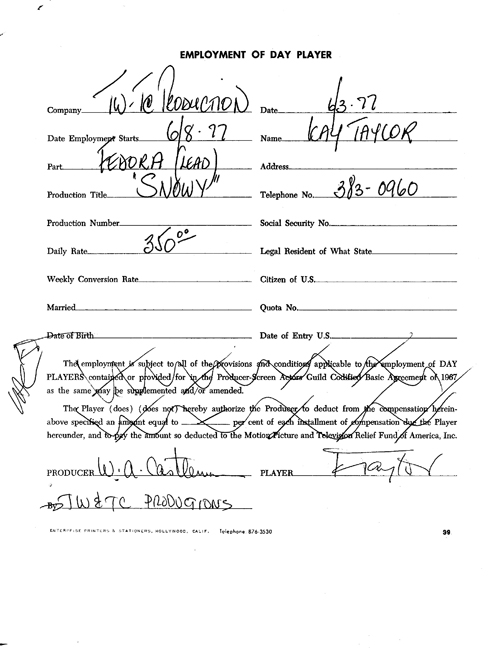 The only remaining casting to do was to find the male members of ‘The Magnificent Seven’ – the group of men who would take part in the film’s climactic orgy with Snowy. To Lany’s annoyance, it turned out that Adler had forgotten to put the word out for these roles, so no one turned up at the casting session. Tony was unconcerned: why hurry, he figured? These guys only job was to turn up and have sex, after all, so he decided to kick the casting process into the long grass, and find them closer to the shooting day.
The only remaining casting to do was to find the male members of ‘The Magnificent Seven’ – the group of men who would take part in the film’s climactic orgy with Snowy. To Lany’s annoyance, it turned out that Adler had forgotten to put the word out for these roles, so no one turned up at the casting session. Tony was unconcerned: why hurry, he figured? These guys only job was to turn up and have sex, after all, so he decided to kick the casting process into the long grass, and find them closer to the shooting day.
*
19.
June 7th, 1977 Antonio Shepherd, PT, and Abigail Clayton
How is it possible to know exactly what happened on the set of a low-budget, X-rated film production almost 50 years after the event – where only a handful of people were present (and most of them have passed away since then)?
It would be pretty impossible, unless the production manager was an anally-retentive, obsessive note-taker who fastidiously documented every detail – including his own increasing incredulity and exasperation at the escalating volume of problems the production encountered.
Step forward Lany Gustavson: his notes from the nine-day shoot – recently acquired by The Rialto Report – reveal a man increasingly on the verge of a nervous breakdown. If Murphy’s law asserts that anything that can go wrong will go wrong, Gustavson’s law seemed to state that if there is a possibility of several things going wrong, the one that will cause the most damage will be the first one to go tits-up. Actually it was worse than that: more like, when you’ve taken all measures to make absolutely sure that nothing can go wrong, it will all go wrong anyway.
Take Day 1, for example: it should have been a relatively straight-forward shoot. Just two actors – Gail and PT – and one location, a secluded part of the beach at Half Moon Bay. The out-of-towners, who included Tony Jr. and Castleman, were checked into the Nob Hill Motel at 1630 Pacific Ave, just up the road from the San Francisco house where rest of the shoot would take place. It was at this motel that the make-up call kicked off the day at 6.30am.
Tony expected it to be a half-day shoot consisting of a few short dialogue scenes, followed by some wanton writhing in the surf. A gentle start to ease everyone into the production.
At 8.30am, the cast and crew arrived at the beach only to find that the quiet stretch of sand they’d identified was virtually impenetrable. Lany’s first written comment was curt: “Almost impossible to gain access to beach. Some downtime.”
Once a portion of the beach was eventually secured, a succession of technical problems followed, as Lany noted:
“Camera breakdown constantly.”
“Door on H.S. cam does not lock. This causes film to jam.” (An ‘H.S. cam’ is a High Speed camera for slow motion cinemtography).
“2 battery packs (charged all night) only running at half speed”.
“H.S. cam jammed – again and again”.
“Cotton fibers in front of bridge below gate”.
“Filter ring frozen making it impossible to mount 2 filters”.
“No filter ring on mount for 16mm lens”.
“Time spent to change motor. Could not use 2nd cam with flat base”.
Next to each problem, Lany stated the time lost: 20 minutes, 1 hour, 40 minutes, 2 hours, and so on.
Tony Jr. stayed calm and good-natured in the face of the issues which relaxed the cast and crew: Lany noted that Tony was more preoccupied with forces outside of his control – namely the weather. It was a cold, cloudy morning, far from the balmy summer’s day he’d hope for, and the promise of a sunny afternoon wasn’t materializing. Eventually they bagged a few shots, but by 6.30pm, Tony called an end to the proceedings due to fading light – and to respect Gail’s 12-hour curfew. The problems meant there were several pick-up shots still outstanding, which were eventually shot using another actress, Susan Jensen (aka Constance Money), as a body double.
Back at the hotel that evening, more problems awaited them: Tony and Lany learned that the mansion hadn’t been prepped for the next day’s shoot, nobody had picked up the costumes, and someone heard that Cris Cassidy, cast in the role of the housekeeper, had unexpectedly left town. At 1am, Lany reached another actor, Bonnie Holiday, and persuaded her to report to the set just a few hours later, to take the role instead.
Lany’s final diary comments for the day summed up the experience: “First day: a disaster. Are sex films always like this?”
*
20.
June 8th – June 16th, 1977 Antonio Shepherd and Lany Gustavson
The next week was spent shooting scenes in the mansion in Pacific Heights – and the problems continued – as Lany dutifully recorded in his daily notes:
“Early morning – loud camera noise. Caused by faulty magazine.”
“Props arrived from rental house. Too expensive. Returned!”
“Rooms not ready, so scenes changed.”
“Due to faulty magazine, we lost 600 ft.”
“Art director – fired!”
“Key grip had court appearance. Lost over an hour.”
“Lost last scene of the day because we couldn’t find any dry ice!”
“New Art Director – Rick Brown – brought in.”
“Talked to Friedman: some beach stuff has to be filmed over.”
“Filming script needs to be re-written because of all the construction problems.”
“Sets still not ready. Long delays!”
“How are we ever going to get a film out of this?!”
The one reassuring constant was Tony Jr. – a calming presence at the heart of the storm, earning the respect of everyone for his measured, pragmatic approach. It seemed that nothing could phase him or knock him off stride – which was more than could be said for Lany.
But if Lany was increasingly frazzled by the multitude of production incidents, the last day tested him more than any other. It was the day they’d slated to shoot the scene where Snowy has sex with the ‘Magnificent Seven.’ The seven actors had still not been hired, so Tony called Harold Adler and arranged an impromptu casting session in Adler’s office. This time, seven actors turned up – just enough to meet the quota – though Lany noted that their experience levels varied enormously: at one end of the spectrum was experienced veteran John Leslie, a relaxed, cocky playboy with a louche smile, but at the other end, several of the men were giggling newbies.
According to the actor releases that day, the seven were Barry Weissman, Daniel Carter, John Douglas, John Rolling, Jeff Lyle, Jim Sontag, and John Leslie. Collectively, Tony referred to them as ‘The Studs’, a generous and optimistic description that a number of them would struggle to live up to.
While the Studs were being hired, the crew were dispatched to prepare the studio location where the orgy would be filmed, a sound stage at 570 18th St in Oakland – but when Lany turned up a few hours later, he found that little work had been done. As a result, he fired both the set director and the gaffer on the spot: “Rip off time,” he wrote.
The 16-hour orgy shoot was due to start at 8am on 14th June, but was delayed by a malfunctioning smoke machine and then by an unresponsive star: “Gail tripping out on shit. No cooperative (sic). Low Mood,” wrote Lany.
To add to the production woes, most of the Studs weren’t performing (“Low wood,” lamented your porno Samuel Pepys), so they had to be called back the following day. Not that it got much better then: “Some cast problems – they were not told pay scale by Harold,” Lany noted, and then, “Guys having problems getting hard-ons.”
Somehow, Tony managed to film enough orgy footage and by the end of the day, barring a few pick-ups that would be shot over the next two days, the principal shooting for ‘Snowy’ was complete.
“Thank God it’s over,” was the last comment in Lany’s notes.
*
21.
Summer 1977 Antonio Shepherd and Guy Pastor
Post-production for ‘7 Into Snowy’ took several months in the latter half of 1977, during which time, Guy Pastor wrote the soundtrack for the movie, contributing an original song, ‘Once Upon A Dream’ – which Dave Friedman was crazy about, promising everyone that it would win the annual award for Best Song. Tony Jr. and Guy had been writing music together for years, but scoring sex scenes was a different proposition – and according to friends, they had a ball, spending most of the editing process in hysterics.
‘Once Upon a Dream’:
Overall though, Tony wasn’t impressed with his work on ‘7 Into Snowy’: quite apart from the painful production problems, he found the end result to be flat, un-involving, and un-inspiring, made worse by the climactic orgy with the Magnificent Seven which he thought was a mess. A few sequences worked just fine, such as the beach scene which despite the cold and windy conditions, somehow they’d managed to turn into a reasonably erotic vignette. But overall, Tony was disappointed. He blamed the ‘Snow White’ framing device, and told Dave Friedman that he wanted his second adult film to be more contemporary and smarter.
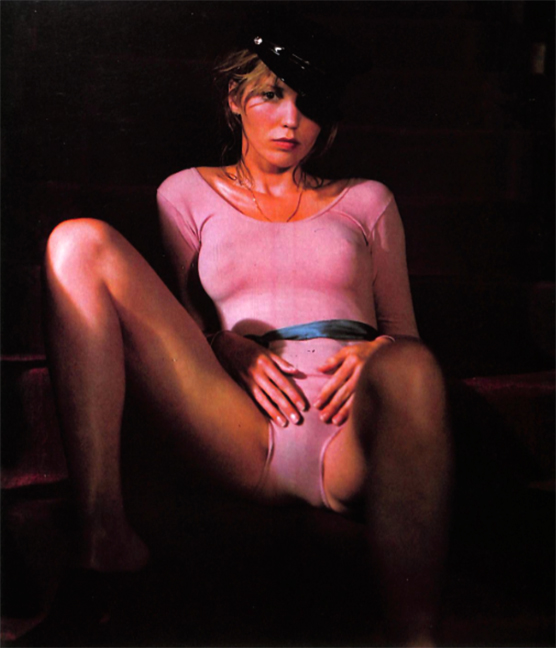 Abigail Clayton, on the set of ‘7 Into Snowy’ (1978)
Abigail Clayton, on the set of ‘7 Into Snowy’ (1978)
*
22.
January 1978 ‘7 Into Snowy’
‘7 Into Snowy’ opened in January 1978.
The reviews from the adult press were positive: Adam Film World gushed, “Abigail Clayton turns in a performance you’ll never forget as the innocent, nubile young orphan Snowy, dominated and abused by her evil stepmother till she turns the tables around in a shattering climax. And The Magnificent Seven are something else again!”
*
23.
September 13th – September 24th, 1977 Antonio Shepherd, Lany Gustavson. And Guy Pastor.
Three months after the ‘7 Into Snowy’ shoot wrapped, Tony Jr – accompanied by his assistant director, Bill Castleman, and the even-more-reluctant production manager, Lany Gustavson – was back on set to film his second, and final, adult film, Chorus Call (1978). This time they were joined by an additional person, Guy Pastor, who had enjoyed the time spent with Tony in the editing suite of ‘7 Into Snowy’ and was enlisted to help the front-end production.
Tony and Guy turned in a script based on ‘A Chorus Line’, a Marvin Hamlisch musical, which they’d seen several times on Broadway. They weren’t the only ones impressed with the show: ‘A Chorus Line’ had been an unprecedented box office and critical hit when it debuted a couple of years earlier, winning twelve Tony Awards, in addition to the 1976 Pulitzer Prize for Drama. It was set on the bare stage of a Broadway theater, and told the story of a group of Broadway dancers auditioning for spots on a chorus line. Tony loved it – and decided he didn’t want to just pay tribute to it as much as turn it directly into a sex film. It was also a perfect fit for the brothers – set in the world of music, it allowed them to write more songs that could fit seamlessly into the plot.
Tony and Guy held casting sessions in their apartment over the first weekend of September 1977. The only casting requirement came from Dave Friedman, and that was to hire his favorite actor, Kay Parker, again. Casting was split into two sessions: on the Saturday, they hired the main characters – choosing New York stalwarts Darby Lloyd Rains, Robert Kerman, Bobby Hollander, and Bobby Astyr for the principal roles. Joey Silvera was in town performing in a live sex show at Show World and so was recruited as the stage director of the fictional musical.
Tony liked them all, but felt that, as a group they were a little long in the tooth, so he added a relative newcomer, Susaye London, and a young couple who showed up to the audition together, Beth Anna and Pepe Valentine. Neither Tony nor Guy were familiar with any of the bigger name New York adult actors at the time, and so ended up hiring the likes of Vanessa del Rio, Sharon Mitchell, Peter Andrews, and David Morris for incongruous deep-background, blink-and-you’ll-miss-them, non-speaking, non-sex roles. There was even a part for Guy who got a cameo appearance in a scene with Kay Parker.
Lany’s production records showed the respective pecking order of the cast in terms of the amounts paid to them: Kay Parker earned the most ($2,510), closely followed by Robert Kerman ($2,250) and Darby Lloyd Raines ($2,000). Others included Susaye London ($1,500), Bobby Hollander ($1,200), Pepe Valentine ($1,150), Joey Silvera ($1,100), and Beth Anna ($800). Lany wrote: “These New Yorkers seem a lot more laid back that their California counterparts. Weird. I thought it was meant to be the other way round?”
 Guy Pastor (second from right) – with (l-r) Darby Lloyd Rains, Kay Parker, Robert Kerman
Guy Pastor (second from right) – with (l-r) Darby Lloyd Rains, Kay Parker, Robert Kerman
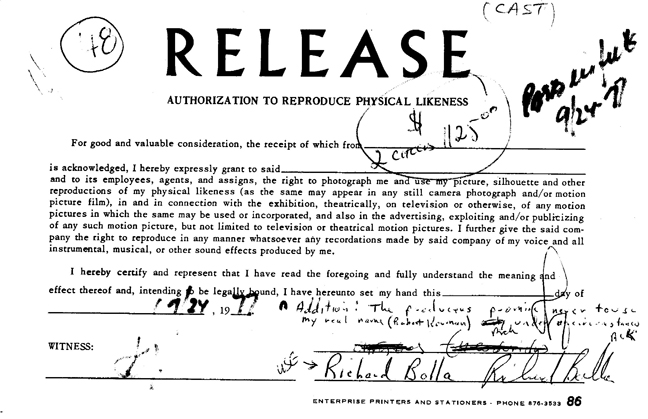 R. Bolla’s release – with added request not to disclose his real name
R. Bolla’s release – with added request not to disclose his real name
Casting for the large number of extras took place the following day, and the apartment was overrun by out-of-work hoofers all willing to pick up $30 for a day’s work standing in the background of a sex film. Recently discovered releases show that 43 such individuals were hired – and include several names who would later achieve success on Broadway. (One of the releases records the presence in the film of Tina Austin, mother of Coco Austin, current-day TV personality and wife of rapper Ice-T.)
Production started on ‘Chorus Call’ on Tuesday 13th September and lasted 12 days, wrapping on Saturday 24th September. Tony Jr., ever a fan of TV, would remember their first day as the same that the sitcom ‘Soap’ debuted on ABC television network as a late-night parody of daytime soap operas. This time, Lany’s production notes show a calmer, more organized production, with few technical or performance issues: “Like night and day compared to Snowy. Evidently, the locals know a thing or two about making sex films in the Big Apple.”
Tony and Guy took advantage of the New York location by filming outside of recognizable venues, such as St Patrick’s Cathedral, Rockefeller Center, Empire State Building, the Plaza Hotel, and the Shubert Theater where ‘A Chorus Line’ was still playing.
Guy delivered a score consisting of the original numbers ‘Chorus Call’ and ‘My Love’ (which Guy sung himself), as well as reusing ‘Once Upon a Dream,’ the theme song from ‘7 Into Snowy.’ But the standout number was a song and dance number, ‘Six Tits in a Row’, a bawdy, big band swing tune recorded using session singers and musicians, and then lip-synced on the theater stage by Alexandria, Ellen Faison, and Rusty Hamilton.
Chorus Call:
‘My Love’:
‘Six Tits In A Row’:
The production shoot finished on time and on budget. Lany’s final comment read, “It’s the curtain call for ‘Chorus Call’. Tony insists this is his last X-rated film – which would be a shame. He’s getting good at it. I’ll miss these guys.”
Chorus Call opened in April, 1978. By that date, Tony and Guy were long gone.
*
24.
1978, 1980 Antonio Shepherd
There were two postscripts to the films credited to Antonio Shepherd, and both of them concern the music that Tony and Guy Pastor wrote for the movies.
Firstly, on July 13, 1978, on the occasion of the second Annual Erotic Film Awards ceremony held by the Adult Film Association of America (AFAA) at the venerable Hollywood Palladium, ‘7 Into Snowy’ took home two awards: Best Song (for ‘Once upon a Dream’) and Best Musical Score.
Two years later, in 1980, at the fourth AFAA bash, the ‘Chorus Call’ showstopper, ‘Six Tits In A Row’ was similarly nominated for Best Song, though it failed to win. Nevertheless, the song still brought the house down that night, with a memorable on-stage version performed live by Lisa DeLeeuw, Candida Royalle, and Laurien Dominique.
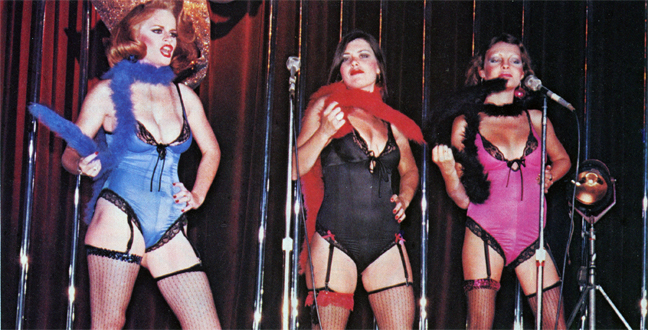 Lisa DeLeeuw, Candida Royalle, and Lauren Dominique on stage singing ‘Six Tits In A Row’ in 1980
Lisa DeLeeuw, Candida Royalle, and Lauren Dominique on stage singing ‘Six Tits In A Row’ in 1980
Dave Friedman, many-time president and eventual chairman of the AFAA, was present for both ceremonies, and later admitted to spending generous stretches of both evenings fielding questions about why Antonio Shepherd himself wasn’t there, or indeed when would Shepherd be making his next film? In fact, who was this guy anyway? Nobody seemed to know anything about him.
Friedman knew the answers, but wasn’t telling.
*
25.
1978-1986 Tony Jr, Burl Ives, and The Littlest Mule
Everyone has their reasons for disappearing, especially if its someone disappearing from the XXX film industry. Family, religion, and shame often play a part, but usually the most obvious reason is the most common: it’s difficult to find future relationships if your resume’ includes making fuck films.
Tony Jr.’s reason was more unique and critical than most: he’d decided that he wanted a career in children’s television. He wondered to friends that maybe it had something to do with the fact that his own childhood had been so happy, or maybe because he’d sometimes yearned for a family of his own. Whatever the reason, Tony knew that any association with his pornographic films would kill his prospects in children’s entertainment.
So after he delivered the final edit of ‘Chorus Call’ to EVI, he severed all ties with Dave Friedman, William Castleman, Lany Gustavson, and everybody else he’d met making ‘7 Into Snowy’ and ‘Chorus Call.’ It wasn’t easy. It had been a crazy few months, he’d had fun, and he’d done things he couldn’t hope to do in the regular film industry. But he felt he had no choice, so he skipped the after-parties, the premieres, the promotional duties, and moved on with his life.
In the years that followed, Tony received a number of offers to act or to write music, but turned most of them down. A couple of exceptions stand out: firstly, he took the lead acting role in a TV show, ‘Burl Ives’ America’ (1978) which he felt compelled to do because of the friendship that Ives’ had enjoyed with Tony’s late father. Ives thought that Tony would be good for the role of a conniving, big-city banker in a drama set in the Ozarks.
And then there was a job that was as low key and small scale as he could hope for after making two award-winning and successful XXX movies: he composed the music for a children’s book, ‘The Littlest Mule.’ It was a lavishly illustrated hardback and came with an accompanying 33 rpm record of the text. Tony’s contribution was the musical score for the disc.
Mostly though, Tony got a string of low-paid writing jobs for kids’ shows. It was a complete change in his life and career but for the first time, he felt truly fulfilled. He was good too, and before long he was noticed by Hanna Barbera, who hired him as the Creative Supervisor for a TV series, ‘Shirt Tales’ (1982-83), based on the 1980s Hallmark Greetings Cards line of the same name. It was a success, lasting two seasons, and generated its own profitable toy line as well.
In between jobs building his fledgling TV career, Tony still found time to play music, performing the occasional concert, and producing his brother Guy’s latest records, ‘This Is It’ (1985) and ‘It’s Magic’ (1988), both of which had echoes of Tony Sr.’s big band swing music. When Guy wasn’t performing his own music, he’d a taken on a profitable side gig playing keyboards and being musical conductor for singer Johnnie Ray.
Guy died of a heart attack in 1992 in his mid 50s.
*
26.
1986-2000 Tony Jr and Stan Lee
Stan Lee, comic book writer, editor, publisher, producer, and irresistible force behind Marvel Comics, needs no introduction to anyone with a passing interest in comics, graphic novels, or superheroes.
In collaboration with others at Marvel, he co-created iconic characters such as Spider-Man, the X-Men, Iron Man, Thor, the Hulk, Ant-Man, the Wasp, the Fantastic Four, Black Panther, Daredevil, Doctor Strange, the Scarlet Witch, and Black Widow. He was also Marvel’s primary creative leader for two decades, expanding it from a small publishing house division to a multimedia corporation that dominated the comics and film industries.
In the 1980s, Stan moved to California to develop Marvel’s TV and movie properties, and it was there that his path crossed with Tony Jr. They hit it off immediately: Stan was looking for talented, motivated storytellers who could bring imaginative ideas to life, and Tony… well, he was looking for exactly the same.
In 1986, Stan hired Tony on his ‘Defenders of the Earth’ TV series – an ambitious mash-up involving Flash Gordon enlisting Mandrake The Magician, Lothar, and jungle hero The Phantom to help him fight Ming The Merciless. Tony had a variety of senior roles for all 55 episodes, including Supervising Story Editor and Voice Director – and he also wrote the main title music, a far cry from ‘Six Tits in a Row’,
The success of the show cemented Stan and Tony’s friendship and their working relationship, leading to other Marvel work, and ultimately the creation of Pastor Productions in 1990 with the stated of intention of “producing family entertainment for theatrical, television and home video markets.” Even more importantly, Tony became Stan’s right-hand man for all the voice work on the animated productions – including high-profile series like ‘Iron Man’ (1994), ‘Fantastic Four’ (1994), ‘Spider-Man’ (1994-1995), ‘Silver Surfer’ (1998), ‘Avengers’ (1999-2000), and ‘Spider-Man’ (2003).
It was a hugely successful partnership. Tony’s job didn’t just consist of overseeing the directing, coaching, and recording of the actors, it also required him to recruit the best talent – and Tony obliged by bringing in big name friends such as Ed Asner, Joe Campanella, Hank Azaria, Mark Hamill, Martin Landau, and Malcolm McDowell. It was an arduous and technically challenging process: interminable table reads with Stan and Tony ever-present that lasted late into the night until everyone was word-for-word perfect. (One actor remembered, “Every word, every letter, every punctuation mark. It was creatively stifling, unnerving, annoying, and I dreaded those meetings. They were sheer torture.”) Despite the challenges, Tony was everybody’s favorite person in the room, encouraging, cajoling, and drawing out their best performances. The number of people who still describe him as their best friend is disarming.
In the late 1990s, Stan Lee stepped away from his regular duties at Marvel, and began a new Internet-based superhero creation, production, and marketing studio, Stan Lee Media. One of his first moves was to hire Tony as Vice President of Creative Affairs. It made sense: the two of them had established a productive and successful working relationship, and it was time to take advantage of the new internet era. They could often be found together, invariably at Hamburger Haven, the long-running, cheerful fast-food restaurant in West Hollywood, where Stan and Tony would hold court with a variety of collaborators.
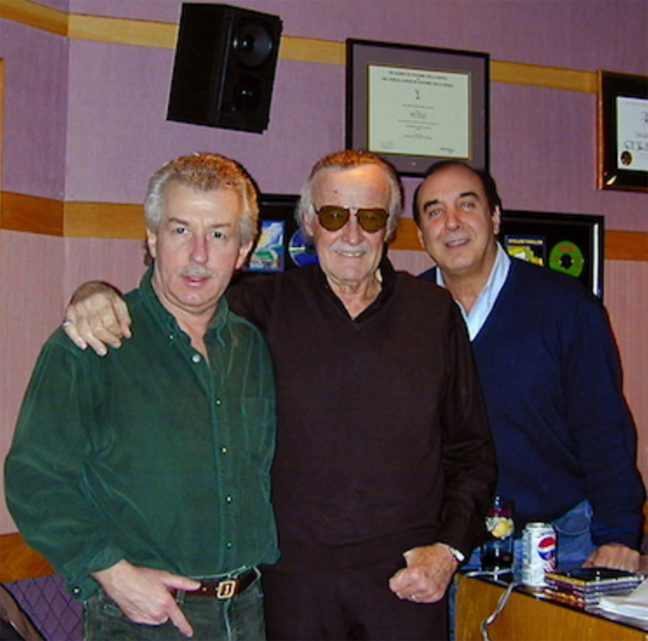 Tony (right) with Stan Lee (center)
Tony (right) with Stan Lee (center)
Financially Tony had done well: he had a house in Beverly Hills and one in Palm Springs, and a long-time girlfriend, Doris, a former Las Vegas showgirl, with whom he shared the Los Angeles home.
The launch of Stan Lee Media looked like a lucrative new start for them, and it began in a wave of optimism with the creation of a 165-person animation production studio in Los Angeles that quickly won awards for its product. But then came the dot-com meltdown, and within a couple of years, the business ran out of operating capital. Stan Lee Media closed operations entirely in December 2000.
*
27.
2001-2020 Tony Jr.
Stories about what happened to Tony Jr. next vary depending on who you talk to, but most people familiar with events just shake their heads and curse.
Apart from losing his job, Tony was inadvertently caught up in the financial debacle that followed the breakup of Stan Lee Media. The big picture was that several of Stan Lee Media’s senior executives were investigated for securities fraud when the company filed for bankruptcy, and several lengthy jail sentences ensued. Neither Stan nor Tony had anything to do with any crimes, but both suffered from the fall-out.
In Tony’s case, it centered around credit cards that had been set up in his name when Stan Lee Media was first formed – where costs amounting to several millions of dollars had been charged against them. As he had unsuspectingly consented to the credit cards, he was now legally responsible and accountable for financial obligations that he knew nothing about – debts that had been the personal slush fund of the fraudsters who managed the company. Claims and counterclaims ensued before Tony finally cleared his name – but it was at great personal expense and the process nearly bankrupted him
Tony figured it was time to downsize his life. He sold his Los Angeles house, and moved into his Palm Springs cottage – breaking up with Doris, his long-term Vegas showgirl girlfriend.
Turning 70 in 2008, Tony realized that the entertainment industry with its new generation of multi-million-dollar CGI superhero action movies had left the skill-sets of people like Stan Lee and himself behind. So he turned to the local community, offering acting classes for groups such as the Riverside Arts Council, and directing several plays in local theaters.
What followed over the next years was an all-too-familiar pattern of events in twenty-first century America. Ill health struck – and further financial issues – when gall bladder surgery went awry. Tony flatlined briefly during the operation, the doctors worked hard brought him back, and a complicated recovery was slow. By the time he was back on his feet, he was saddled with a huge medical charge that he couldn’t afford to pay. He turned to the Director’s Guild for assistance but was told there was no health care through the union at that stage. Then he started losing his eyesight as a result of macular degeneration. It wasn’t a serious condition – partially fixable with surgery – but by the time his procedure was scheduled, it was the beginning of Covid and hospitals were full of infected patients fighting for their lives. Friends advised Tony to postpone but he didn’t want to delay it. He checked into hospital, contracted Covid, and passed away shortly afterwards. He was 81.
Tony was buried back in Connecticut where he was laid to rest with his father – back where it had all began with an immigrant who became a jazz musician.
*
Epilogue The Pastors
While we were researching the life of Tony Pastor Jr., a friend of his sent a VHS video. It shows a party, seemingly from the early 1990s. A family celebration in a restaurant, an anniversary perhaps, or maybe a birthday.
Then Tony stands up in front of the celebrants and takes the microphone. He introduces his brothers next to him: Guy, sat at a keyboard, and John, with his bass guitar.
Tony looks apologetic. He explains that the brothers haven’t sung together for many years, so they will be a little rusty. He asks the audience to bear with them. The crowd seems restless.
The brothers start a song tentatively, but they are clearly comfortable together and their effortless harmonies gel quickly. Within seconds, they are enthusiastically belting out “He Ain’t Heavy, He’s My Brother” by The Hollies at full volume. Their eyes are closed, their chests pushed forward with passion.
The audience are surprised. They unexpectedly and spontaneously rise and erupt into cheering and applause. The song ends, and the Pastor brothers look exhausted and happy, their faces creased with exuberance.
*
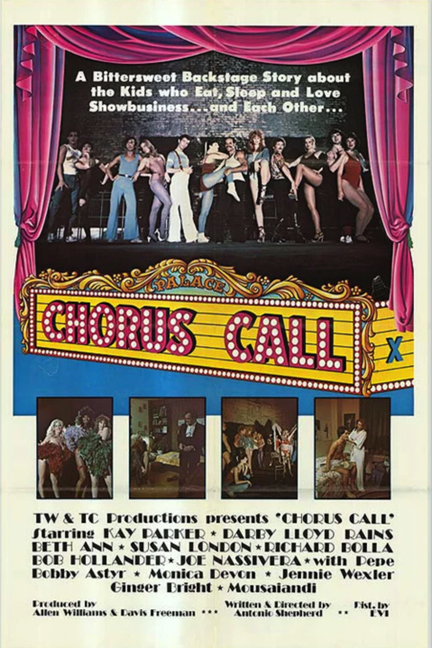
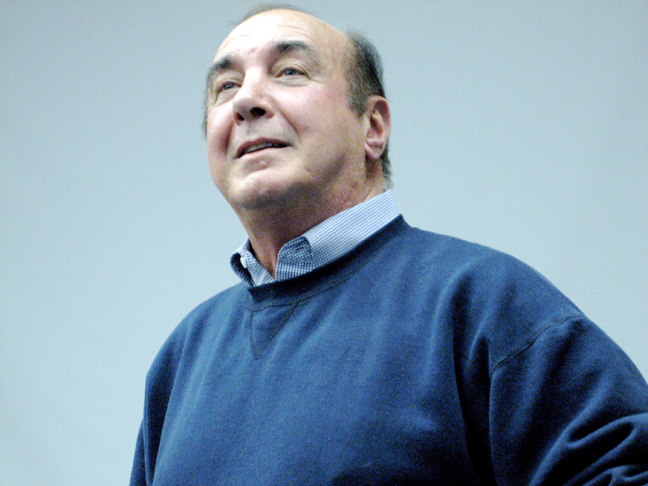

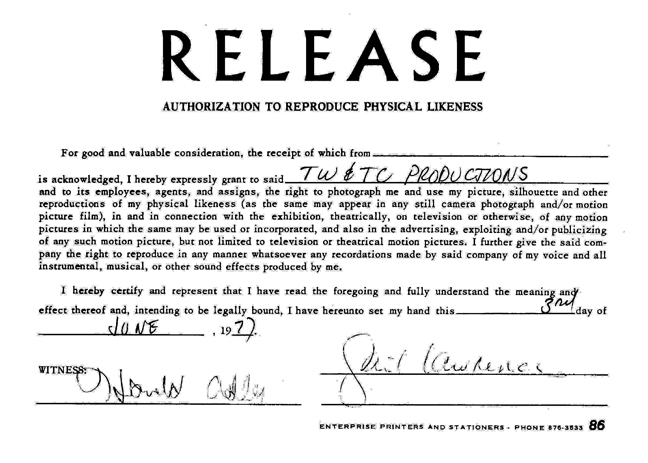

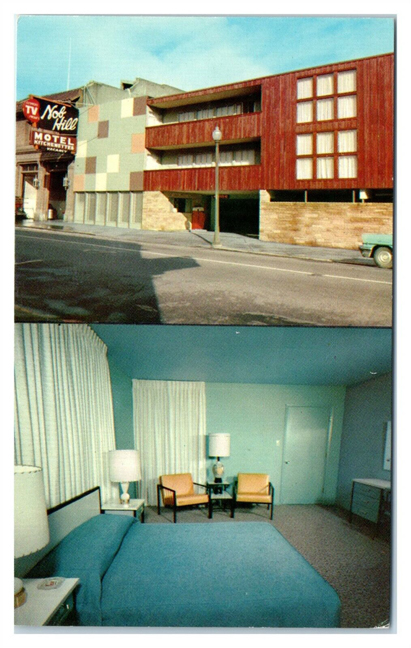

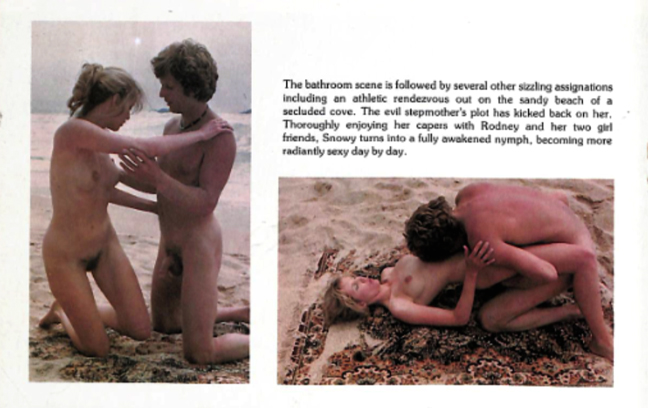
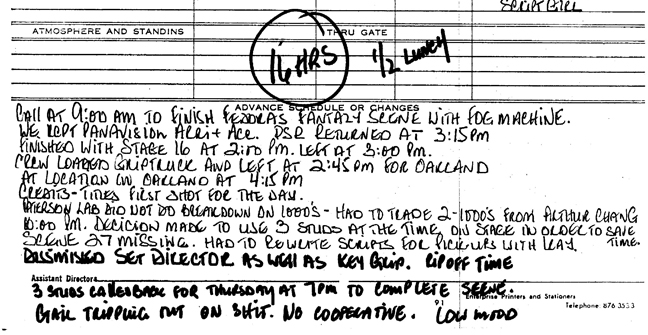
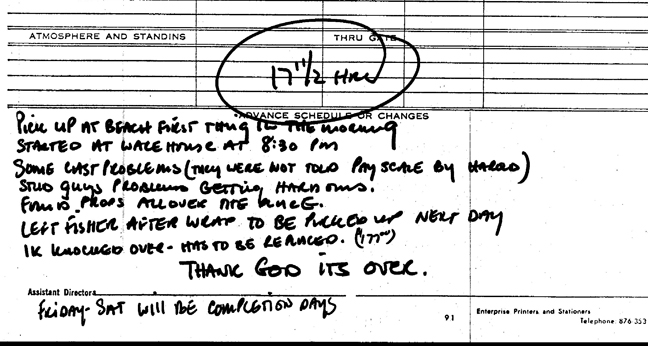
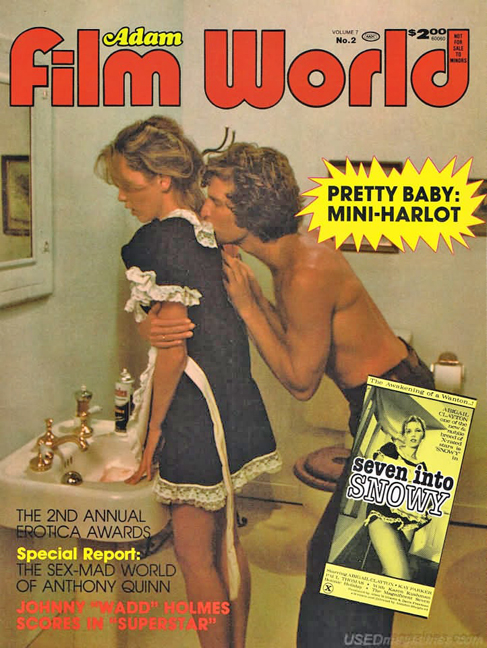



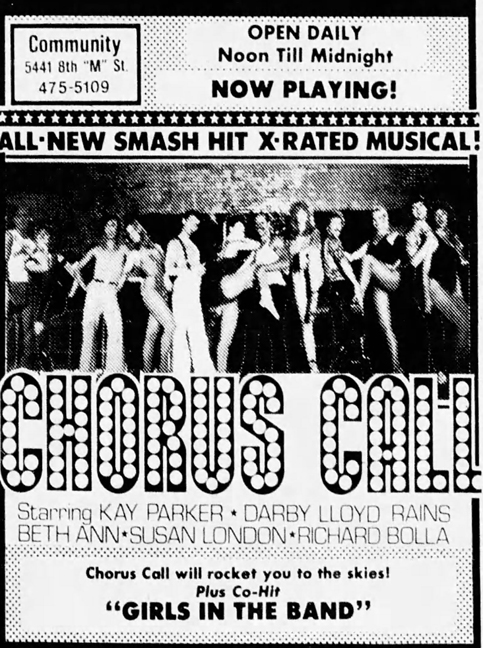

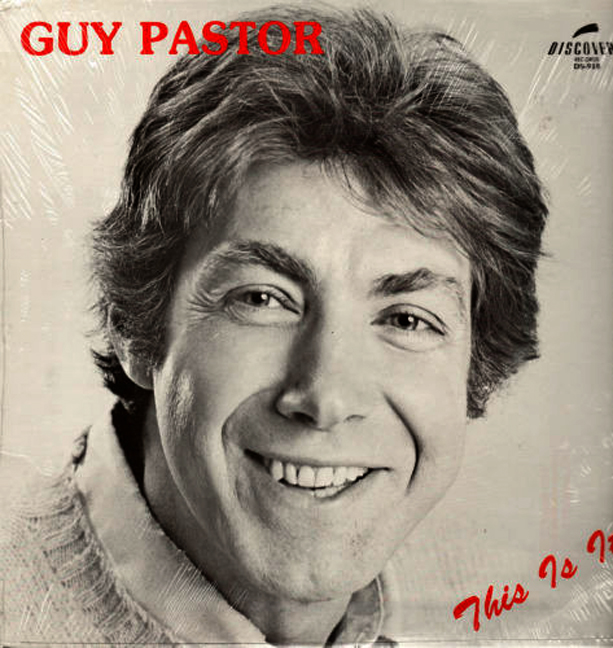
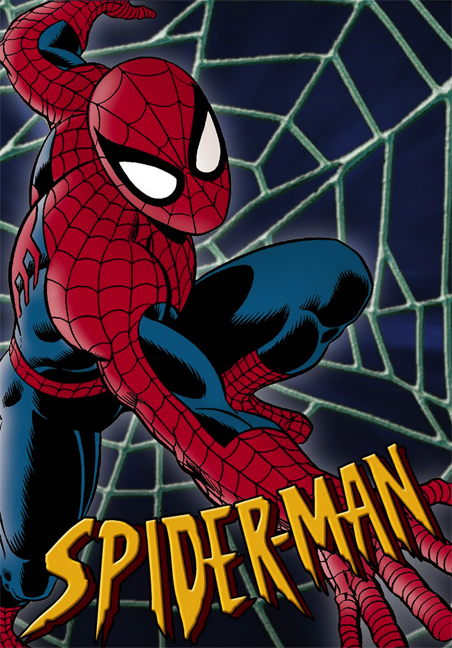
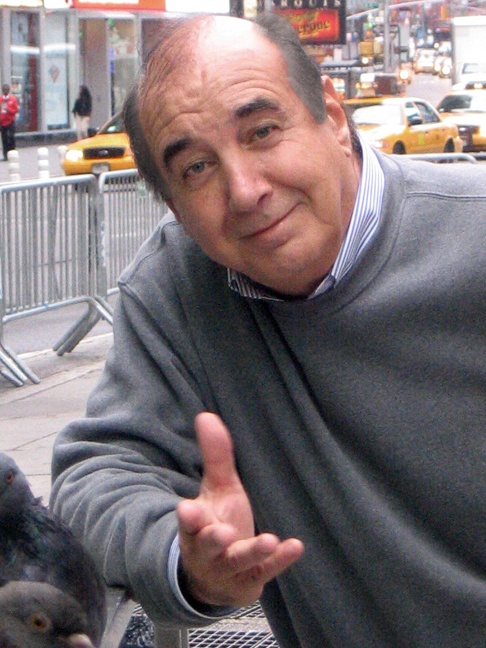
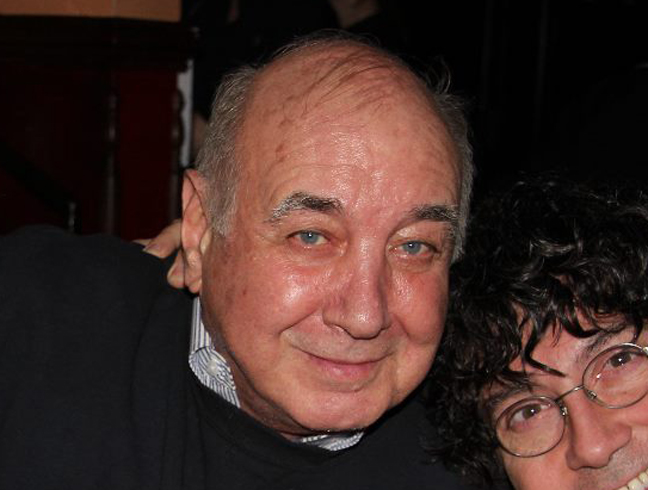
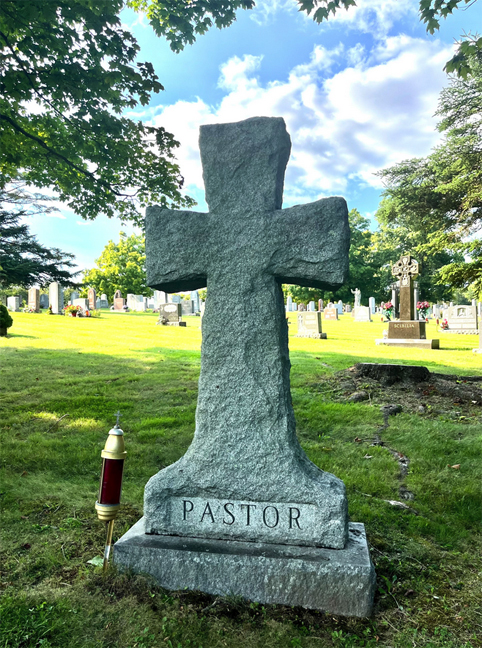

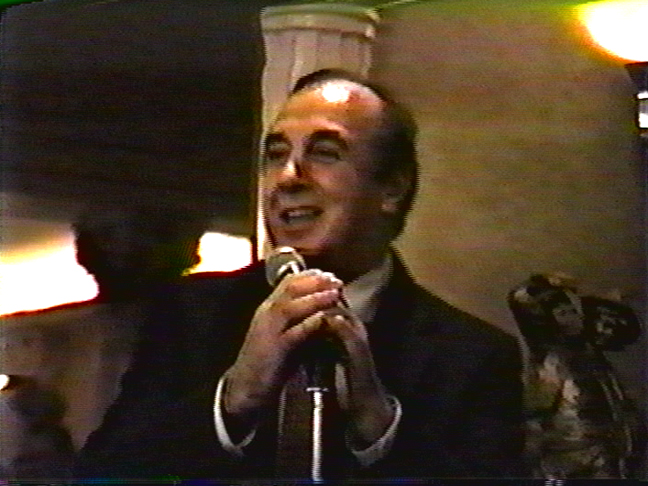
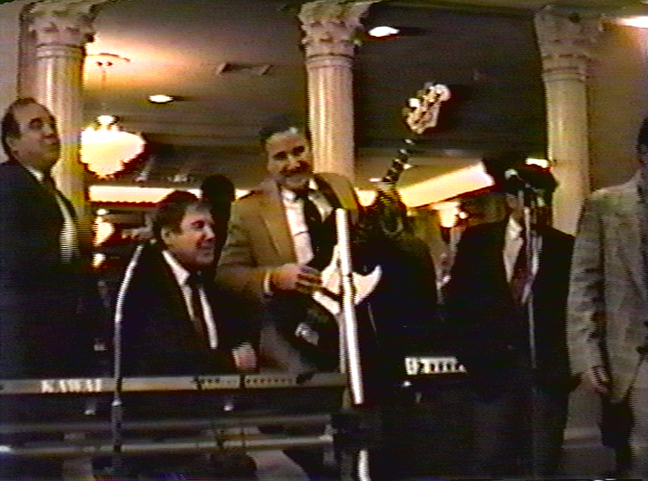
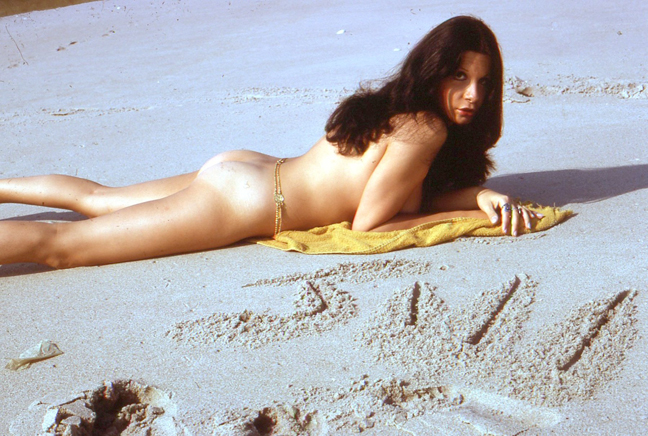
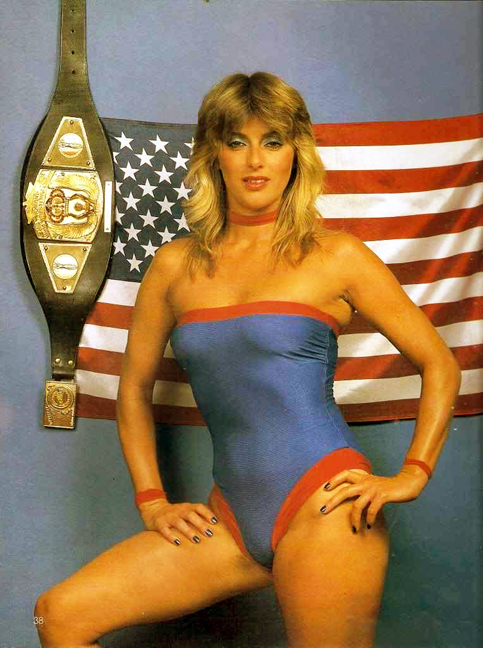
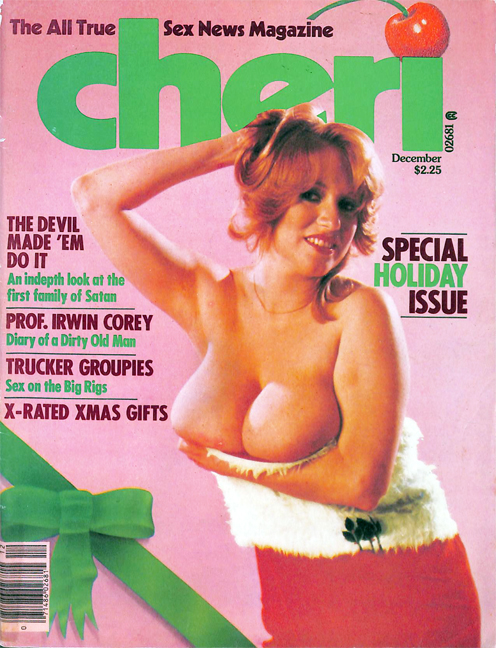

Superlatives are inescapable here, but this is an amazing story, wonderfully told. Truly an epic, sprawling tale capturing many different periods of American history and different generations of an immigrant family.
A towering achievement.
Quite brilliant. A story that starts in 1911 and ends in 2020…. a rollercoaster of detail, always compelling but never losing sight of the intimate as well. So good.
The Lany production notes are great! Such interesting detail. Thanks Lany!
Several levels above any other writing on adult film.
Amazing as always.
Fantastic research! What I find amusing is David F. Friedman’s fixation on resurrecting classic literary works and fairy tales for the “adults only” cinema audiences (going as far back as Goldilocks and the Threes in 1963). Being an educated man and well-read, it’s as if he wanted to elevate and infuse these dirty movies with some semblance of culture, class and refinement – whether it be The Notorious Daughter of Fanny Hill, The Head Mistress, The Joys of Jezebel, The Lustful Turk, Trader Hornee, The Long Swift Sword of Siegfried, The Ribald Tales of Robin Hood, The The Erotic Adventures of Zorro, The Adult Version of Jekyll and Hide, etc. Mostly, I think he really just enjoyed producing these bigger budget, lavish historical costume dramas. It definitely became one of his tawdry trademarks!
Yes! You make an excellent point about Friedman wanting to add some form of respectability to his films. He was a cultured man as I found out when I met him in NYC in 2003.
I love what SWV and The Rialto Report has done with film history, and would love to see more collabs between you guys.
Thanks Lisa – any chance the 7 INTO SNOWY print you have may see the light of day? Thanks for all your work!!
Awesome Article Keep Up Good Work
Immense achievement to cover a century and a family’s history in such as readable, fascinating way.
This is worthy of a awards. (And to think of when I used to read reviews on AV/DV Maniacs – history and histro-telling has come a long way since then… thanks God!)